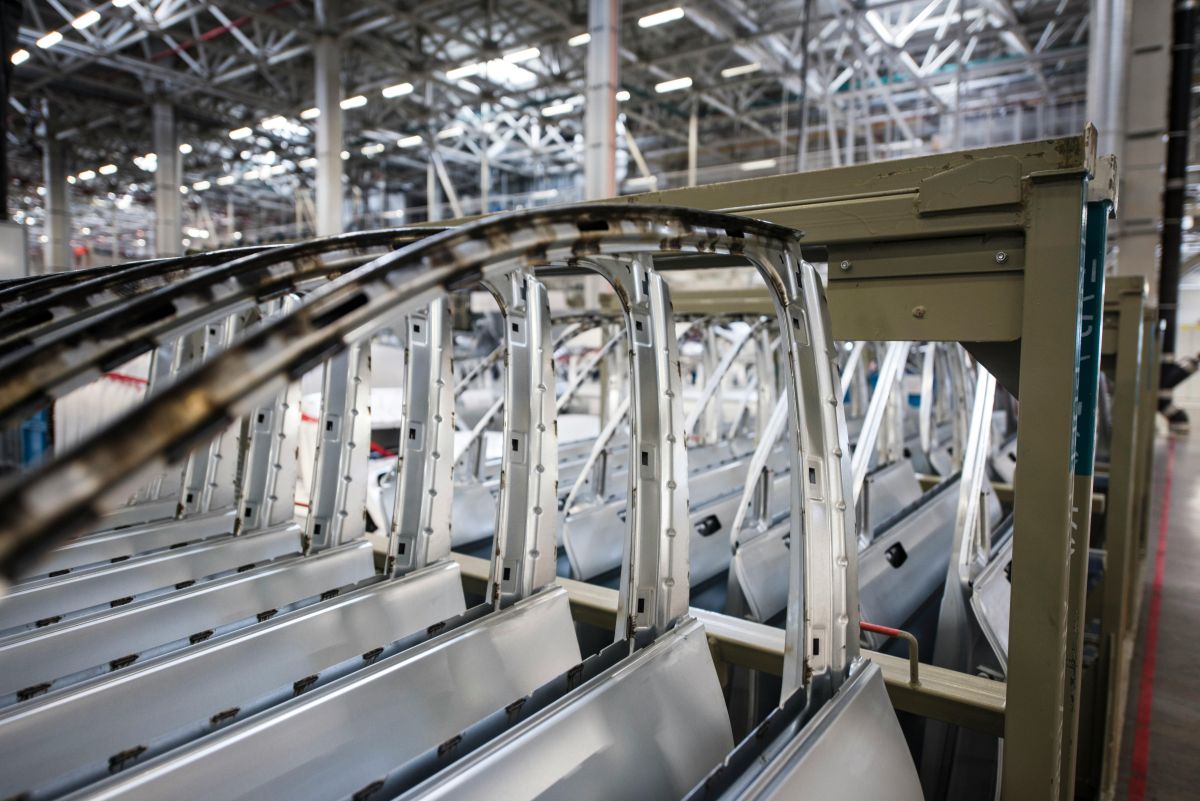While the cyberattacks on CDK Global in June in some cases temporarily hampered wholesale parts sales to body shops, parts delivery times prior to that had improved significantly not only from the months of the United Auto Workers (UAW) strike last fall but even compared to last spring, according to data shared by PartsTrader.
Across all part types -- OEM, non-OEM, used and reconditioned -- the median delivery time has remained steady for several years at just above one day, Greg Horn, chief innovation officer for PartsTrader, said at the recent Automotive Body Parts Association (ABPA) conference. But if nine out of 10 parts needed for a job typically all arrive promptly, Horn said, it’s the outlier that tells more of the story.
 Greg Horn of PartsTrader.
Greg Horn of PartsTrader.
“Averaging dilutes the impact of that one part out of 10 that is significantly delayed,” he said. “By looking at the median plus two standard deviations, you capture 95% of the population.”
Without diving deeply into the statistical methodology, that number stood at 9.7 days in March, according to PartsTrader data. That was down significantly from the most recent peak of 14.8 days last October during the final four weeks of the UAW strike against the domestic automakers. But it was also down from between 12 and 13 days in April and May 2023, and down from all of 2022, which ranged by month from a low of 13.4 days to a high of 14.4 days. But pandemic supply chain delays haven’t fully disappeared: Deliveries were at just 7.4 days in the first quarter of 2021.
Claims Impact of ADAS
Matt Moore of the Insurance Institute for Highway Safety (IIHS) also spoke at the ABPA conference. He said IIHS data continues to show three types of ADAS have the most impact on claims frequency: forward collision warning, front auto-brake and rear auto-brake. In general, he said, the systems that “act on your behalf are associated with far bigger frequency reductions than those that just yell at you like my mom did when I was 16.”
Moore said ADAS is contributing to the rising severity of claims for reasons beyond the cost of replacing and calibrating the systems.
“Rear auto-braking is incredibly effective and eliminates a large percentage of claims,” Moore said. “But how fast are you going when you back up? Two, three miles per hour, tops. So what kind of claims are we going to eliminate with that system? Cheap claims. So in a hypothetical distribution of claims, if we throw out a whole bunch of cheap claims and recalculate the average, what happens? The average goes up. We didn’t make any claims any more expensive. We just threw out a whole bunch of cheap ones.”
The implementation of ADAS can also impact the claims mix, Moore said. Mazda has a system called Smart City Brake Support that works only when the vehicle is moving up to 18 mph; obviously it reduces more small severity claims. On the other hand, General Motors has a forward collision warning system that is only active above 25 mph, reducing higher severity claims.
A lot has been made of the higher claims severity of electric vehicles compared to vehicles with internal combustion engines. But Moore cautioned such comparisons can be problematic.
“The electric vehicle fleet looks nothing like the gas power fleet, making comparisons incredibly difficult,” he said. “We have almost no [electric] pick-up trucks, and pick-up trucks represent a huge piece of the U.S. market. And we don’t have big honking, electric SUVs. And this matters a whole bunch because the types of crashes we get into by point of impact, and the dollar values of those crashes, vary by vehicle type. The most expensive crash you can get into and the most common is front dead center. The least expensive crashes are the rear quarters, particularly in pick-up trucks.”
Electric vehicles, Moore also noted, are primarily operating -- and being repaired -- in metropolitan areas where prevailing wages are higher.
Discussion of Design Patents on Parts
ABPA’s membership consists primarily of manufacturers and distributors of non-OEM parts, so the conference includes discussion of the industry’s efforts -- both through legislation and litigation -- to increase the industry’s ability to sell more aftermarket parts.
At the federal level, the Congressional clock is ticking for backers of the Right to Equitable and Professional Auto Industry Repair (REPAIR) and Save Money on Auto Repair Transportation (SMART) acts, with just months until the session ends and the election this fall likely cutting into legislative activity.
Similar to bills introduced since 2015, the SMART Act would slash the length of time automakers’ design patents on exterior crash parts can prohibit the production and sale of non-OEM versions of the parts -- from 14 years to just 30 months.
The REPAIR Act is described as “right to repair” legislation, prohibiting vehicle manufacturers from impairing a vehicle owner’s access to their vehicle’s data related to diagnostics and repair, or impairing a non-OEM parts manufacturer from producing or selling compatible aftermarket parts.
Both bills are backed not by the largest mechanical and collision repair shop trade associations, but by the Consumer Access to Repair (CAR) Coalition, which consists of insurance companies, CAPA, LKQ Corporation and other manufacturers and distributors of non-OEM parts.
Justin Rzepka of the coalition told ABPA conference attendees the SMART Act has a dozen co-sponsors, including U.S. Rep. Darrell Issa (R-CA), chairman of a House subcommittee reviewing the legislation.
The REPAIR Act has 54 co-sponsors, including many of the members of the House Energy and Commerce Committee reviewing the bill. It has moved through the subcommittee process.
Rzepka said he was expecting forward movement on both bills this summer. “But we can’t predict the future and lots of things can happen,” he acknowledged.
In addition to passage by committee, the bills would have to be voted on by both the full House and Senate, before early January when this Congress ends. The legislation would have to be reintroduced to start the process over next year.
Impact of Parts Patents
Even if the federal legislation doesn’t pass, a federal appeals court ruling in May could make it easier to challenge design patents. The court overruled tests used for more than four decades to gauge the validity of design patents, at a minimum creating uncertainty for some time as to how courts should evaluate them.
“This ruling is a major victory for aftermarket part manufacturers,” said Ed Salamy, executive director of the ABPA.
During the conference, PartsTrader’s Horn shared data he thinks demonstrates the impact that automaker design patents on crash parts have on non-OEM parts sales. Horn compared the market share of OEM to non-OEM parts sales for some part types and automakers.
Horn said domestic automakers -- he shared data for Ford and Chevrolet -- tend to have more design patents compared to import brands like Honda and Toyota. In terms of front lamps, Ford and Chevrolet OEM parts capture about 63% and 69% market share, respectively, compared to about 49% for Honda and 42% for Toyota. The market share of OEM bumpers for Honda (about 73%) and Toyota (about 67%) are again lower than that for Chevrolet (about 75%) and Ford (about 81%).
“This is, in my mind, what the [patents] have done for the American versus the Asian manufacturers,” Horn said.















John Yoswick